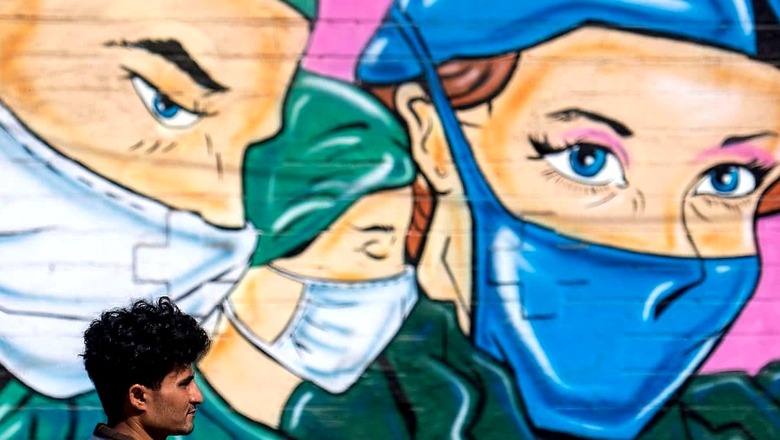
views
There is a noticeable surge in Covid-19 cases but hospitalisation and death rate is not alarming, co-chair at INSACOG’s advisory board, Dr Saumitra Das, told News18.com in an exclusive interaction.
The Indian SARS-CoV-2 Genomics Consortium, or INSACOG, is a group of over 50 laboratories to monitor genomic variations in the Covid-19 virus. Genome sequencing is a technique used to identify and understand the characteristics of new virus strains.
The XBB 1.16 variant of Covid-19 has been found in 76 samples across several states in India, according to data from INSACOG.
XBB.1.16 is a lineage with three additional spike mutations (E180V, K478R, and S486P) along with some other mutations on the other parts of the virus in comparison to the other variants found in India in the past.
Hence, Das believes that the new variant might show some consequences in terms of escaping immunity or causing infections. “However, more studies are required to understand virulence and infectivity. So far, the trend of hospitalisation and deaths is not alarming.”
He added: “We haven’t seen an alert either from the genome sequencing effort or the sewage surveillance program.”
Das, a professor and microbiologist at the Indian Institute of Science (IISc), believes that another reason behind the surge in cases could be the festival season which just got over across India.

“We have seen a similar spike in cases post-Diwali and Christmas also. But the new strain, plus get-togethers due to festival season, could also lead to a sporadic rise in cases.”
Das said: “We are comparing the present surge with the Covid-19 numbers in the last three to four months which were very low.” He added that “in the previous 3-4 months, the infection was under control and the cases were extremely low in comparison to the same months in the previous year”.
Coronavirus trying hard to enter human body
Das, who is the former director of the National Institute of Biomedical Genomics, calls novel coronavirus — SARS CoV2 — “an intelligent pathogen” that has been mutating and leaving no stone unturned to enter the human body.
The virus enters by attaching its spike proteins to the cells in the human body. A majority of the vaccines work on preventing this attachment of the spike proteins to the receptors in humans, which is why the virus was failing to escape immunity.
In XXB.1.16, the virus has come up with multiple changes — not only in spike proteins — as it knows that humans have already gained immunity against the attack via that route.
“We know that the virus is mutating and evolving. It is an interesting point to notice that in XBB.1.16, the mutations are made in other pockets and not only in spikes proteins. In this variant, the mutations have been made in ORF 9b (ORF9b protein may be involved in modulating the host’s immune system response).”
What do we need to do?
As a regular practice, people should start judging their environment in order to protect themselves against Covid-19, Das said.
“While I understand the concept of pandemic fatigue, we need to learn and live with it. We must understand that whenever we face an unknown population — such as in aircraft or in shopping malls — it is better to protect ourself by wearing masks and maintaining distance,” he said.
He added: “Hand hygiene is a normal practice and by combining all these measures, one can not only protect themselves against Covid-19 but against all viral or flu attacks.”
Read all the Latest India News here




















Comments
0 comment